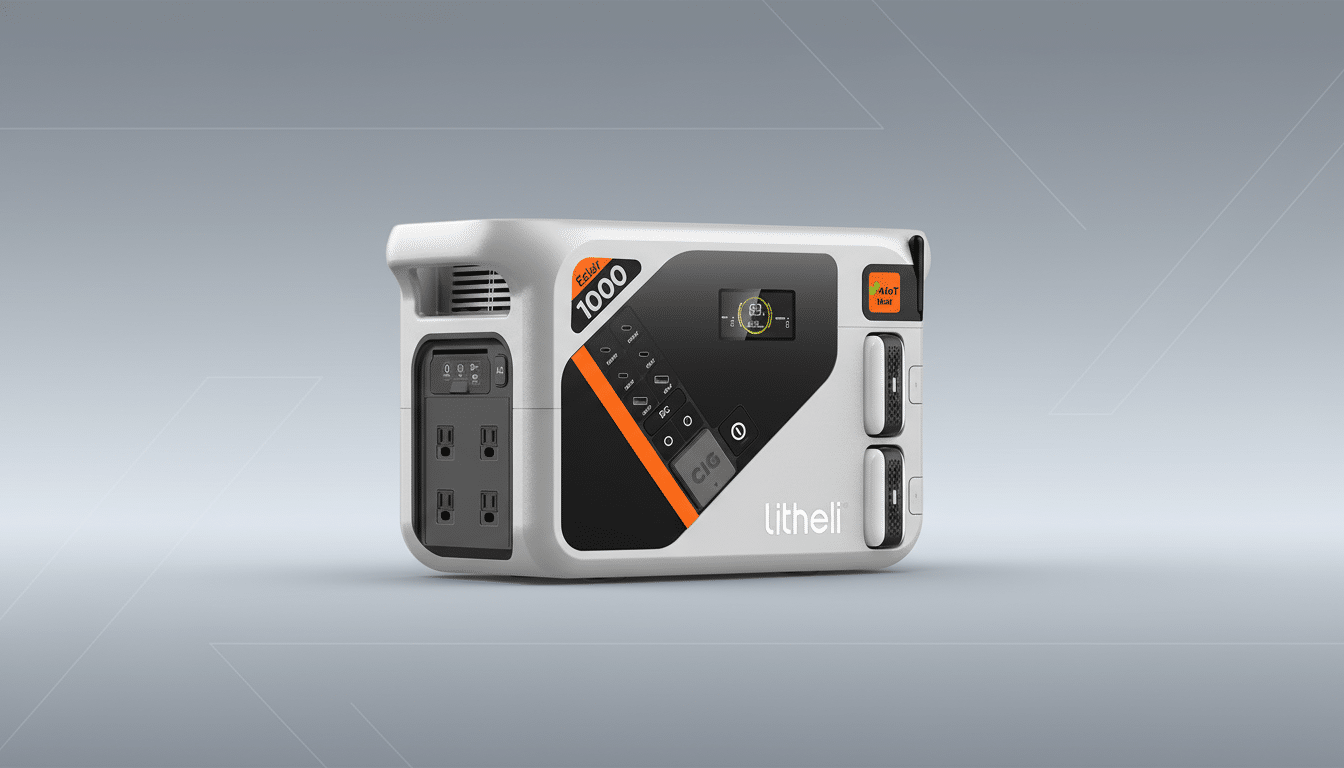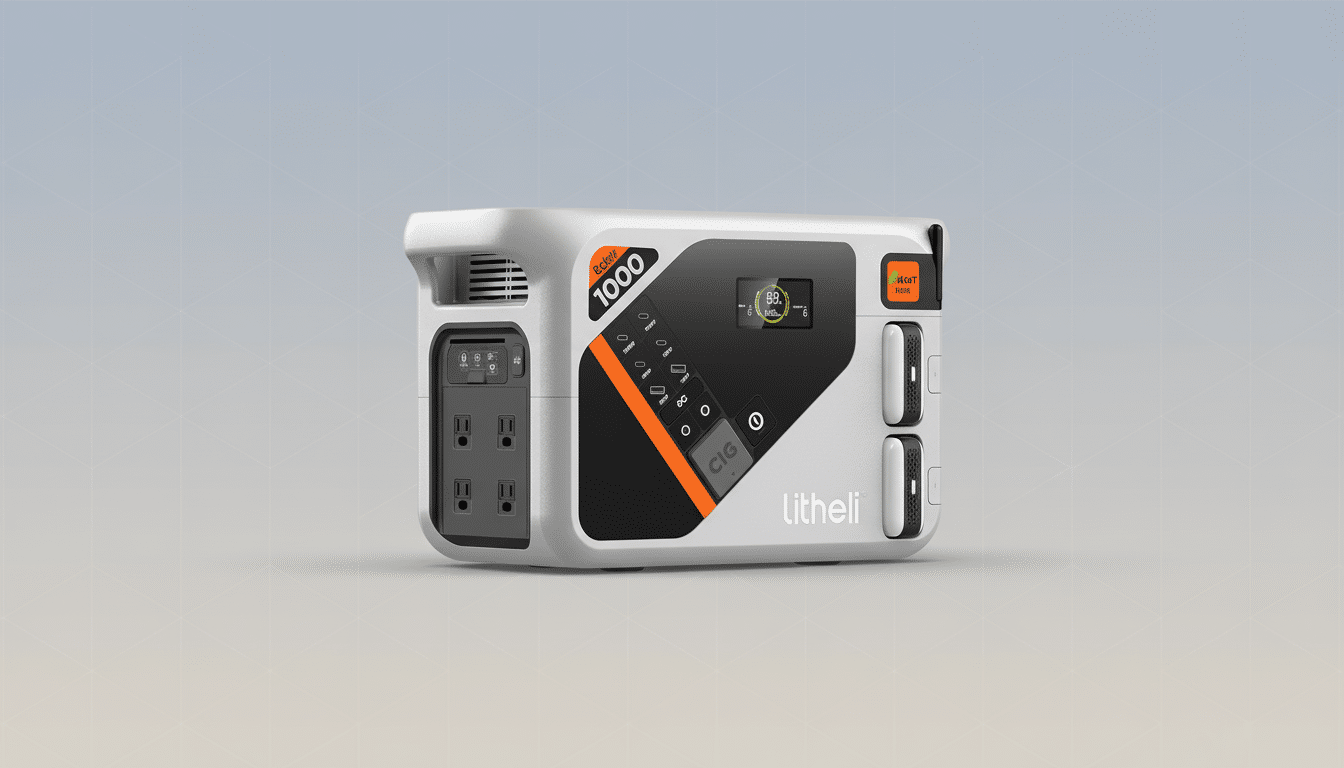Strong and smartly priced, the new-look Litheli Eclair 1000 is one of the most tempting portable power buys right now. At $419.99, the 1kWh-class unit undercuts a number of competitors — and with a twist you seldom see in this category: it comes with two removable power banks that slide out from the chassis when you need to take your charging on the go.
You can score the deal through Amazon, which is fulfilled directly by Litheli — that’s $280 off the usual retail price. If you’ve been on the lookout for a versatile power solution for home backup, road trips, or weekend camping, this setup is certainly worth a close look.
- What Makes This Portable Power Station Stand Out
- Why These Removable Batteries Are Better Taken Apart
- Real-world capacity estimates and practical use cases
- Fast recharging options for home and off-grid use
- Price and value context against competing models
- What to consider before buying this power station
- Bottom line: who the Eclair 1000 is best suited for

What Makes This Portable Power Station Stand Out
At the heart of the Eclair 1000 is a 1,069Wh battery — enough theoretical capacity to charge up a modern smartphone around 50 times, keep a 100W projector illuminated for some eight to nine hours, or operate an average-sized 150W mini fridge for five to six hours, assuming normal inverter efficiency. It pumps up to 1,800W of output through four AC outlets, which will cover everything from a computer to a power tool with plenty of headroom.
There’s an abundant port selection: four USB-C ports, two USB-A, a 12V car socket, and two DC5521 outputs side by side with the AC bank, and a Pogo Pin interface. That broad I/O allows for charging multiple devices at once, with no daisy-chained adapters needed — a practical advantage when your campsite or living room turns into a hub of charging.
Why These Removable Batteries Are Better Taken Apart
This makes use of two docked Litheli U20 IPS Super Batteries, as mentioned. Combined, they store 20,000mAh, and when used separately, both can be deployed as power banks with up to a 45W output over USB-C or 18W through USB-A. This makes it easy to top up a tablet, camera, or even a handheld console by removing one unit and tossing it in your bag.
Modularity is important in the physical world. In a blackout, one person can keep the router and lights operating at the main station while another goes with a pocketable bank. And since a 20,000mAh pack is approximately 74Wh, which falls below the FAA’s carry-on battery limit of 100Wh, it’s airline-friendly for travel. Litheli also makes a line of compatible tools that are able to run off these same batteries — a smart ecosystem play that allows the utility chain to extend beyond just charging.
Real-world capacity estimates and practical use cases
For campers and creators, the 1kWh is a sweet spot. Consider a 60Wh laptop charging up to around 12–14 times, a 40W CPAP machine running for approximately 20–24 hours, or a drone fleet that’s powering through its batteries between takes. Your mileage will vary with load and ambient temperature. You’ll be glad for the headroom when random demand spikes happen.
Grid reliability is still an issue in many places, and longer outages reported by the U.S. Energy Information Administration have pushed more households toward portable storage.
One of these can carry your house through an evening brownout (or keep the essentials running while you wait for service), without the noise and fumes of a gas generator.
Fast recharging options for home and off-grid use
Speed is crucial following a deep discharge, and the Eclair 1000 is quicker than most in its class. The company says it can, in fact, juice up from AC within an hour at full throttle — a feature that you’d normally see on pricier models. For off-grid situations, the station takes up to 400W of solar input, and time can also be spent filling it up from a vehicle’s 12V socket during transit.

Fast AC top-ups alongside decent solar input make the system versatile for home use and long weekends away from a plug.
Price and value context against competing models
At that price, it’s a decent bit less than what a 1kWh station can often fetch. Competing-capacity models from known brands often arrive in the $600 to $900 range outside of promotions. The removable power banks are a direct value add — you’re essentially getting two 20,000mAh chargers, which would be separate purchases otherwise.
If you are a habitual flipper between phones, laptops, cameras, and accessories in terms of compatible chargers, the simple act of peeling off a battery to stay on the go significantly diminishes resistance. That convenience is hard to measure until you’ve lived with it.
What to consider before buying this power station
Match the unit to whatever your peak wattage needs are; appliances that cycle on tend to surge above what they draw. For power-intensive electronics, a pure sine wave output might be desired — check specs and safety standards for compatibility. Also think about overall weight, fan noise under heavy load, and whether you need extras, such as app control or pass-through charging.
If you prefer a nice mix of capacity with speed and versatility in a far less expensive package, the Eclair 1000’s pricing will resonate for most shooters today.
It ticks the fundamentals, charges briskly, and innovatively addresses this most first-world of problems — “I just need a quick top-up” — without opening up the main station to provide it.
Bottom line: who the Eclair 1000 is best suited for
What you get is a serviceable 1kWh power station with an unusual extra: two removable, 20,000mAh power banks that push its usability well beyond the campsite or living room.
If you’re looking for a combination of backup power that is easy to have with you all the time and that can charge your devices while you are on the go, it’s an easy recommendation at its current price.

